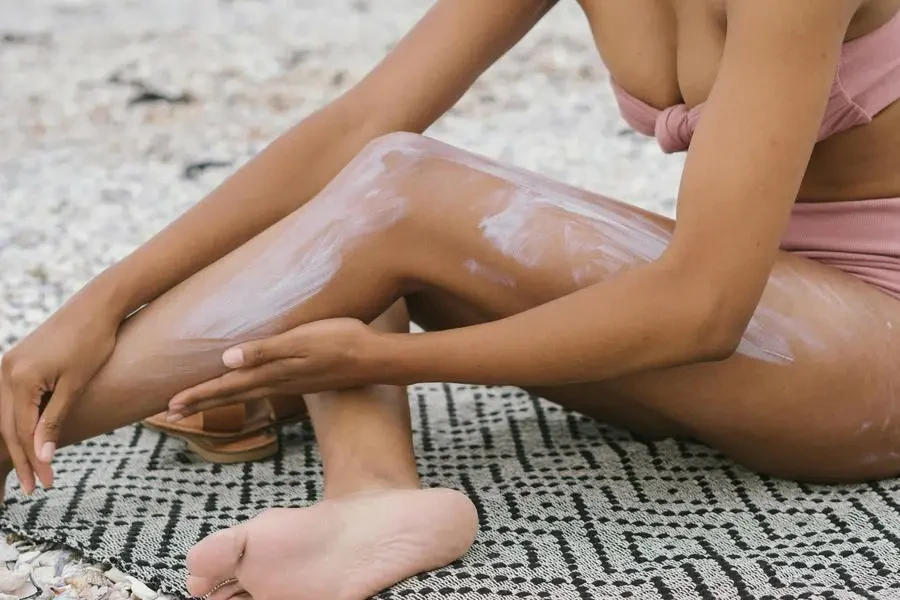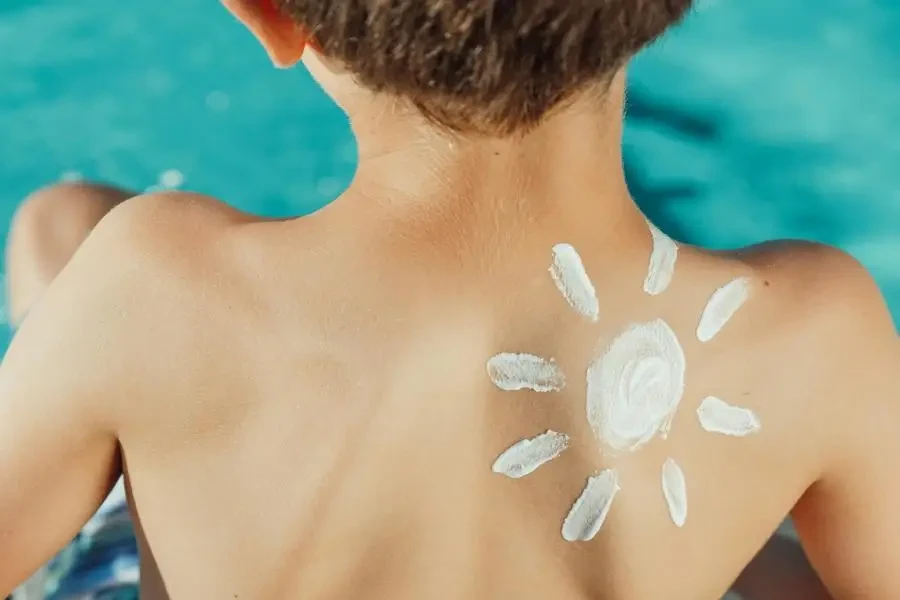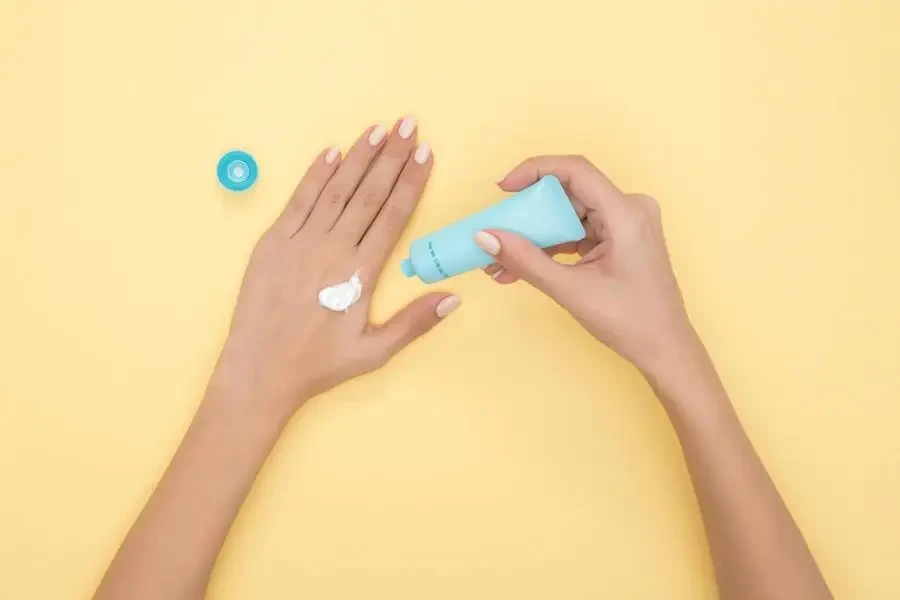In the ever-evolving world of skincare and beauty, tinted sunscreen has emerged as a game-changer. Combining the benefits of sun protection with a touch of makeup, this innovative product is capturing the attention of consumers and industry experts alike. As we delve into the rise of tinted sunscreen, we’ll explore its definition, market potential, and the social media buzz surrounding it.
Table of Contents:
– Exploring the Rise of Tinted Sunscreen: A Blend of Beauty and Protection
– Diverse Tinted Sunscreen Varieties: Meeting Different Consumer Needs
– Addressing Consumer Concerns: Solutions for Common Pain Points
– Innovations and New Entrants: The Future of Tinted Sunscreen
– Key Considerations for Sourcing Tinted Sunscreen
Exploring the Rise of Tinted Sunscreen: A Blend of Beauty and Protection

Defining Tinted Sunscreen: The Perfect Fusion of Skincare and Makeup
Tinted sunscreen is a versatile cosmetic formulation that offers the dual benefits of sun protection and a subtle tint. This product serves as a protective shield against harmful ultraviolet (UV) rays while simultaneously providing a sheer, skin-enhancing tint. Available in a wide range of shades, tinted sunscreens cater to diverse skin tones, ensuring that individuals of all backgrounds can enjoy both sun protection and an even complexion. The formulations often include additional skincare benefits such as hydration, antioxidants, and anti-aging properties, making them a popular choice for consumers seeking a multi-functional product.
Market Potential: The Surge in Demand for Tinted Sunscreen
The global tinted sunscreen market has witnessed significant growth in recent years. According to a professional report, the market was valued at USD 0.99 billion in 2023 and is expected to reach USD 1.32 billion by 2029, rising at a CAGR of 4.82%. This growth is driven by increasing awareness about the importance of sun protection and the desire for a natural, everyday makeup look. Consumers are increasingly seeking products that not only protect their skin from damage but also nourish and rejuvenate it. Tinted sunscreens, with their formulations that include ingredients like hyaluronic acid, vitamins, and antioxidants, address these needs effectively.
The rising prevalence of skin diseases, such as melanoma and skin cancer, has also accelerated the demand for sunscreen products. The American Cancer Society estimated that in 2023, 39,490 women and 58,120 men in the United States were affected by melanoma. This increasing prevalence of skin diseases underscores the importance of sun protection, further driving the market for tinted sunscreens.
Social Media Buzz: Trending Hashtags and Influencer Endorsements
Social media has played a pivotal role in the rise of tinted sunscreen. Platforms like Instagram and TikTok are buzzing with hashtags such as #TintedSunscreen, #SunProtection, and #NoMakeupMakeup, highlighting the product’s popularity among beauty enthusiasts. Influencers and skincare experts are endorsing tinted sunscreens, showcasing their benefits and demonstrating their application in daily skincare routines. These endorsements have significantly contributed to the product’s visibility and acceptance among consumers.
Moreover, the trend towards clean beauty and green sunscreens has further fueled the demand for tinted sunscreens. Consumers are increasingly looking for products that are free from harsh chemicals and crafted with organic ingredients. This growing preference for natural and organic personal care items is a driving force behind the expansion of the tinted sunscreen market.
In conclusion, tinted sunscreen represents a perfect fusion of skincare and makeup, offering a double-duty solution for consumers worldwide. With its rising market potential and social media buzz, it is poised to become a staple in the beauty and personal care industry. As awareness about sun protection continues to grow, the demand for innovative products like tinted sunscreen is expected to soar, making it an exciting space to watch in the coming years.
Diverse Tinted Sunscreen Varieties: Meeting Different Consumer Needs

Mineral vs. Chemical: Understanding the Key Differences
In the realm of tinted sunscreens, the choice between mineral and chemical formulations is pivotal for business buyers. Mineral sunscreens, often referred to as physical sunscreens, contain active ingredients like zinc oxide and titanium dioxide. These ingredients sit on the skin’s surface and physically block UV rays. According to a report by Research and Markets, mineral sunscreens are particularly favored for their hypoallergenic properties, making them suitable for sensitive skin types. On the other hand, chemical sunscreens absorb UV radiation through their active ingredients, such as avobenzone and octinoxate, converting it into heat and releasing it from the skin. This type of sunscreen tends to be more lightweight and less visible on the skin, which can be a significant selling point for consumers seeking a more natural look.
SPF Levels: Balancing Protection and Aesthetic Appeal
The Sun Protection Factor (SPF) is a critical consideration for tinted sunscreens, balancing the need for effective UV protection with aesthetic appeal. Products with SPF levels ranging from 15 to 30 are often sufficient for daily use, providing adequate protection while maintaining a lightweight feel. However, for consumers spending extended periods outdoors, higher SPF levels, such as SPF 50 or above, are recommended. A professional report highlights that the global tinted sunscreen market is segmented by SPF levels, with a growing demand for products offering higher protection without compromising on the cosmetic benefits. This trend is driven by increasing awareness of the harmful effects of UV radiation and the rising prevalence of skin cancer.
Shades and Coverage: Catering to a Wide Range of Skin Tones
One of the standout features of tinted sunscreens is their ability to cater to a diverse range of skin tones. Brands are increasingly expanding their shade ranges to ensure inclusivity. For instance, Fenty Beauty’s Hydra Vizor Huez Tinted Moisturizer with SPF 30 is available in 10 shades, addressing the needs of consumers with varying skin tones. This inclusivity not only enhances the product’s appeal but also ensures that all consumers can benefit from sun protection without the risk of a white cast. The market’s shift towards more inclusive shade ranges is supported by data from TikTok Analytics, which shows a growing interest in tinted SPF products that cater to darker skin tones.
Addressing Consumer Concerns: Solutions for Common Pain Points

Tackling Skin Sensitivity: Hypoallergenic and Non-Comedogenic Options
For consumers with sensitive skin, finding a suitable tinted sunscreen can be challenging. Hypoallergenic and non-comedogenic formulations are essential in this regard. These products are designed to minimize the risk of allergic reactions and prevent clogged pores, which can lead to breakouts. According to a report by the American Academy of Dermatology Association, the demand for such formulations is on the rise, driven by the increasing prevalence of skin conditions like acne and rosacea. Brands like Dermalogica have responded to this demand with products like their Clearing Defense SPF, which uses natural tapioca starch to provide a matte finish without irritating the skin.
Longevity and Wear: Ensuring All-Day Protection and Coverage
Longevity and wear are crucial factors for tinted sunscreens, especially for consumers who require all-day protection and coverage. Products that offer long-lasting wear without the need for frequent reapplication are highly sought after. Innovations in formulation, such as the use of film-forming agents and water-resistant ingredients, have significantly improved the durability of tinted sunscreens. For example, Tan-Luxe’s The Future Airbrush 360 Self-Tan Mist, developed in collaboration with Paris Hilton, offers a long-wearing, transfer-proof finish that appeals to consumers seeking reliable sun protection and a flawless complexion.
Eco-Friendly Choices: Sustainable and Reef-Safe Formulations
Sustainability is becoming a key consideration for consumers and businesses alike. Eco-friendly and reef-safe formulations are gaining traction in the tinted sunscreen market. These products avoid harmful chemicals like oxybenzone and octinoxate, which can damage coral reefs and marine life. Brands like Ultra Violette have embraced this trend with their Super Glow Drops, which combine sun protection with a bronzing effect while adhering to eco-friendly standards. The growing consumer demand for sustainable products is reflected in the market’s shift towards formulations that prioritize environmental responsibility without compromising on efficacy.
Innovations and New Entrants: The Future of Tinted Sunscreen

Cutting-Edge Ingredients: The Role of Antioxidants and Hyaluronic Acid
The future of tinted sunscreen lies in the incorporation of cutting-edge ingredients that offer additional skincare benefits. Antioxidants like vitamins C and E, as well as hyaluronic acid, are increasingly being included in formulations to provide hydration, anti-aging benefits, and protection against environmental stressors. According to a report by Research and Markets, these added benefits are driving consumer preference for tinted sunscreens that do more than just protect against UV rays. Products like Drunk Elephant’s Antipollution Sunshine Drops, which contain chronocyclin to mimic the effects of vitamin D, exemplify this trend.
Hybrid Products: Combining Sunscreen with Other Skincare Benefits
Hybrid products that combine sunscreen with other skincare benefits are set to dominate the market. These multifunctional products simplify consumers’ skincare routines by offering sun protection, hydration, and coverage in a single application. For instance, James Read’s Self Glow range integrates fermented mushrooms and hyaluronic acid into its tanning products, providing both skincare and sun protection benefits. This trend towards hybrid products is supported by data from WGSN, which highlights the growing consumer demand for simplified, yet effective, skincare solutions.
Emerging Brands: Fresh Players Making Waves in the Market
The tinted sunscreen market is witnessing the entry of several new and innovative brands. These emerging players are challenging established brands by offering unique formulations and targeting niche consumer needs. For example, Canadian brand SaltyFace’s Tanning Water uses sebum-balancing camellia sinensis leaf to provide a natural tan while maintaining skin health. Similarly, US-based brand Ciele has introduced SPF 50 blush that protects against multiple types of radiation, including UVA, UVB, blue light, and infrared. These new entrants are driving competition and innovation in the market, ensuring that consumers have access to a diverse range of high-quality products.
Key Considerations for Sourcing Tinted Sunscreen

Quality Assurance: Ensuring Product Safety and Efficacy
For business buyers, ensuring the safety and efficacy of tinted sunscreens is paramount. Quality assurance processes, including rigorous testing and certification, are essential to verify that products meet safety standards and deliver the promised benefits. According to a report by the American Cancer Society, the increasing prevalence of skin cancer underscores the importance of effective sun protection. Business buyers should prioritize suppliers that adhere to stringent quality control measures and provide transparent documentation of their testing protocols.
Supplier Reliability: Building Trustworthy Partnerships
Building reliable partnerships with suppliers is crucial for business buyers in the tinted sunscreen market. Supplier reliability encompasses factors such as consistent product quality, timely delivery, and responsive customer service. Establishing long-term relationships with trustworthy suppliers can help businesses maintain a steady supply of high-quality products and respond effectively to market demands. A professional report emphasizes the importance of due diligence in supplier selection, recommending that business buyers conduct thorough evaluations of potential suppliers’ track records and capabilities.
Regulatory Compliance: Navigating International Standards
Navigating the complex landscape of international regulatory standards is a critical consideration for sourcing tinted sunscreens. Different regions have varying requirements for sunscreen formulations, labeling, and marketing claims. For instance, the European Union has stringent regulations regarding the use of certain UV filters and claims related to sun protection. Business buyers must ensure that their products comply with the relevant regulations in their target markets to avoid legal issues and ensure consumer safety. A report by the World Bank highlights the importance of staying informed about regulatory changes and working with suppliers who are knowledgeable about compliance requirements.
Final Thoughts: The Growing Importance of Tinted Sunscreen in Beauty and Skincare
In conclusion, the tinted sunscreen market is experiencing significant growth, driven by increasing consumer awareness of sun protection and the desire for multifunctional skincare products. Business buyers must navigate a complex landscape of product varieties, consumer concerns, and regulatory requirements to source high-quality tinted sunscreens. By prioritizing quality assurance, building reliable supplier partnerships, and ensuring regulatory compliance, businesses can successfully meet the growing demand for these essential skincare products.




